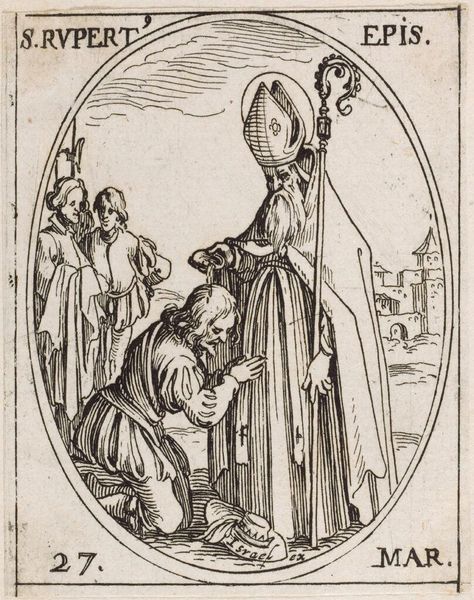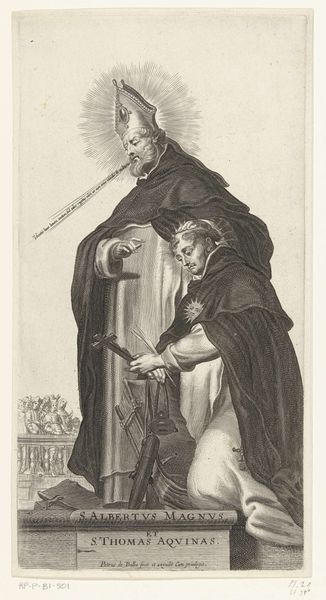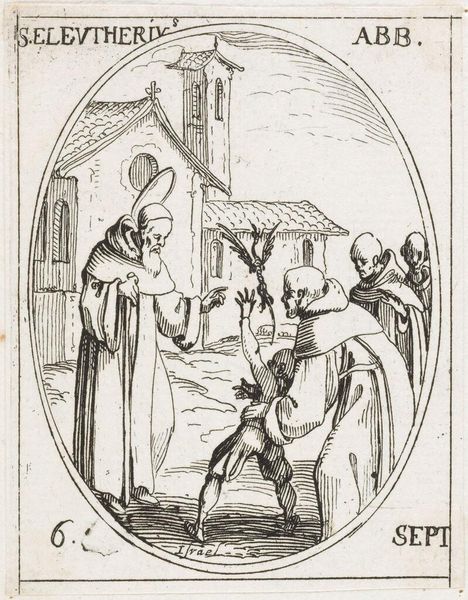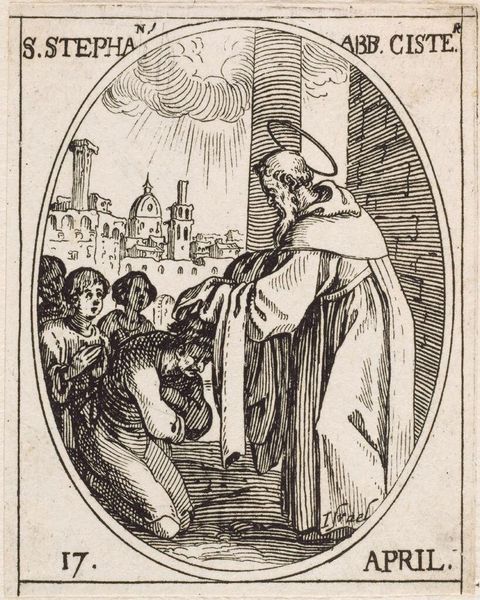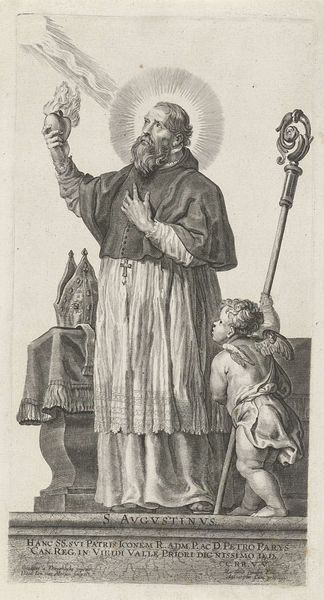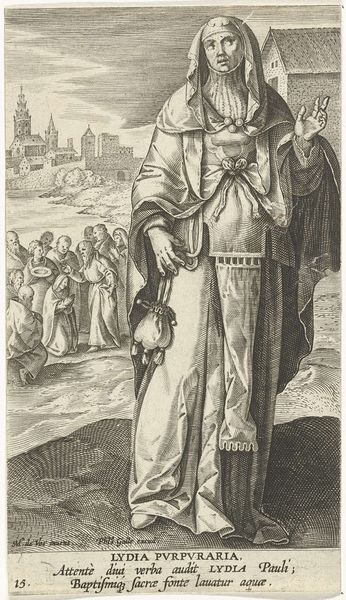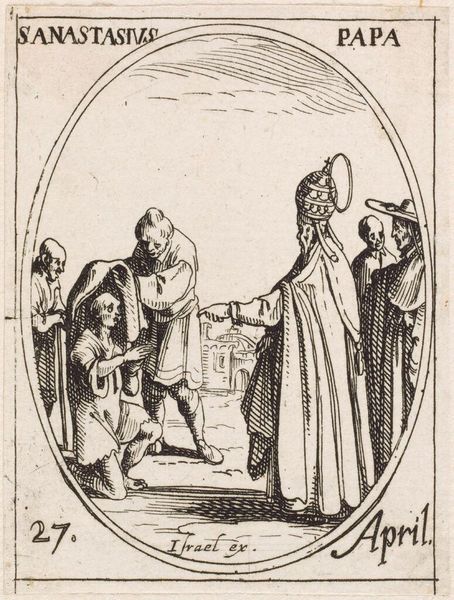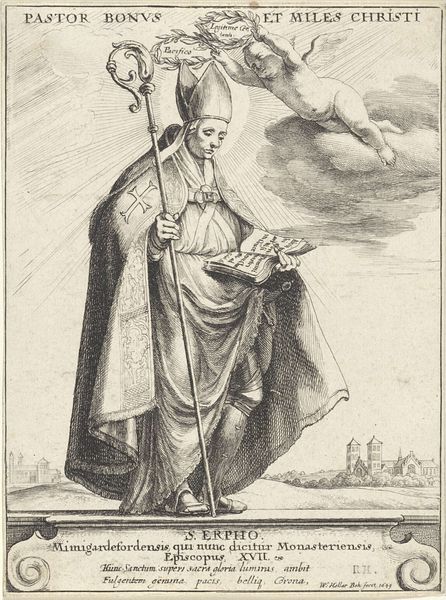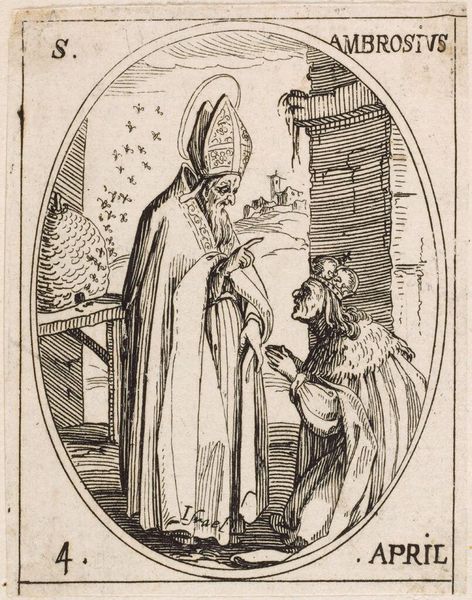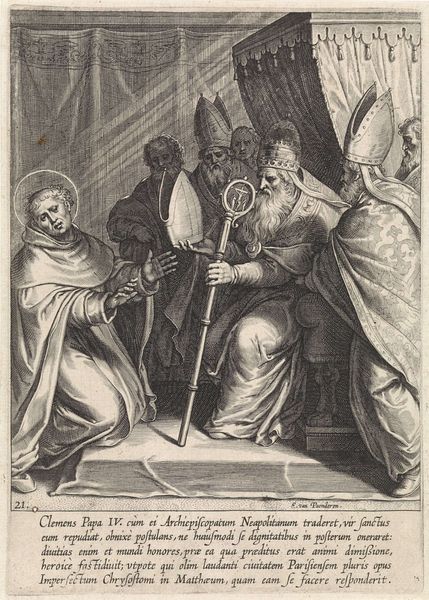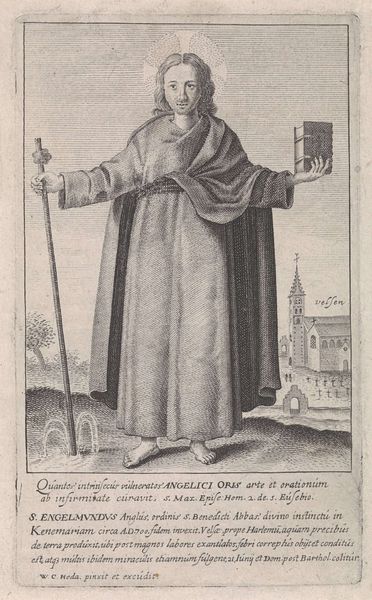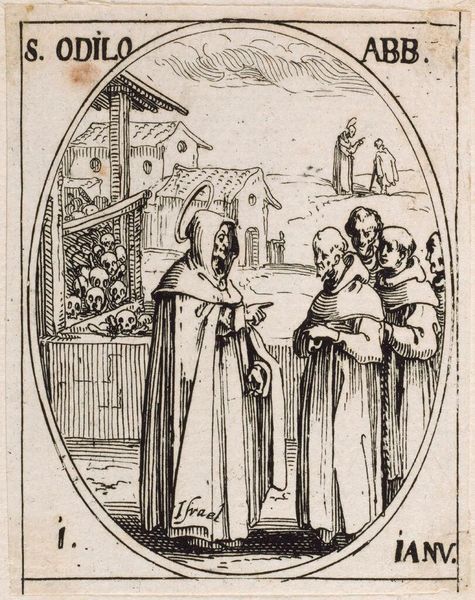
print, engraving
#
portrait
#
baroque
# print
#
figuration
#
line
#
history-painting
#
engraving
Dimensions: height 122 mm, width 75 mm
Copyright: Rijks Museum: Open Domain
This engraving of Saint Augustine was made by Jacob Matham, sometime around the turn of the 17th century. It's an intricate work, achieved through a process of cutting lines into a metal plate, inking it, and then pressing it onto paper. Look closely, and you'll notice how Matham uses hatching and cross-hatching to create areas of tone and shadow. This wasn't just a technical exercise, it demanded meticulous labor. The image is built up from thousands of tiny, precise cuts. The density of these lines gives the print its depth and texture. The relative ease of reproduction allowed for the wider dissemination of images and ideas, playing a crucial role in shaping religious and cultural identities during the Reformation and beyond. Engravings like this existed within a culture of reproduction, where the artistry lay not only in the initial design but also in the skilled execution of the printmaking process. They remind us that artistic value isn't solely about the unique, singular artwork, but also about the craftsmanship and the social context in which it was made.
Comments
No comments
Be the first to comment and join the conversation on the ultimate creative platform.
